Last Monday found me driving with my students up into the White Mountains, the last true “range” of the Basin & Range as you head west, before you hit the Sierra Nevada. We drove up route 168 from Big Pine, ogling the SETI array and then the Waucobi lake beds, and then entered the bedrock of the White Mountains. We were driving through new territory for all of us, pretty much. Technically, I had driven this road before, but it was before my days of enlightenment, and so I hadn’t paid much attention to the geology the first time through. But now, well… some stuff stood out to me!!
I saw an amazing outcrop, and pulled over at the next turn-out. Right there next to the vehicles, we saw this:
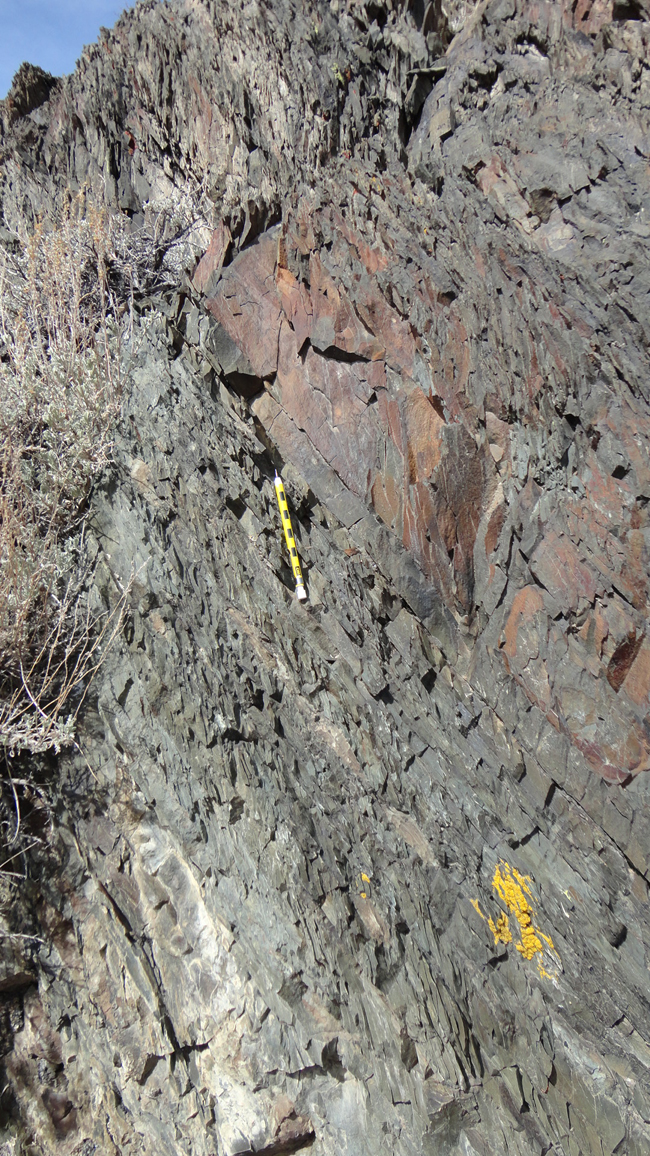
Lovely, right? Here, allow me to annotate it for you…
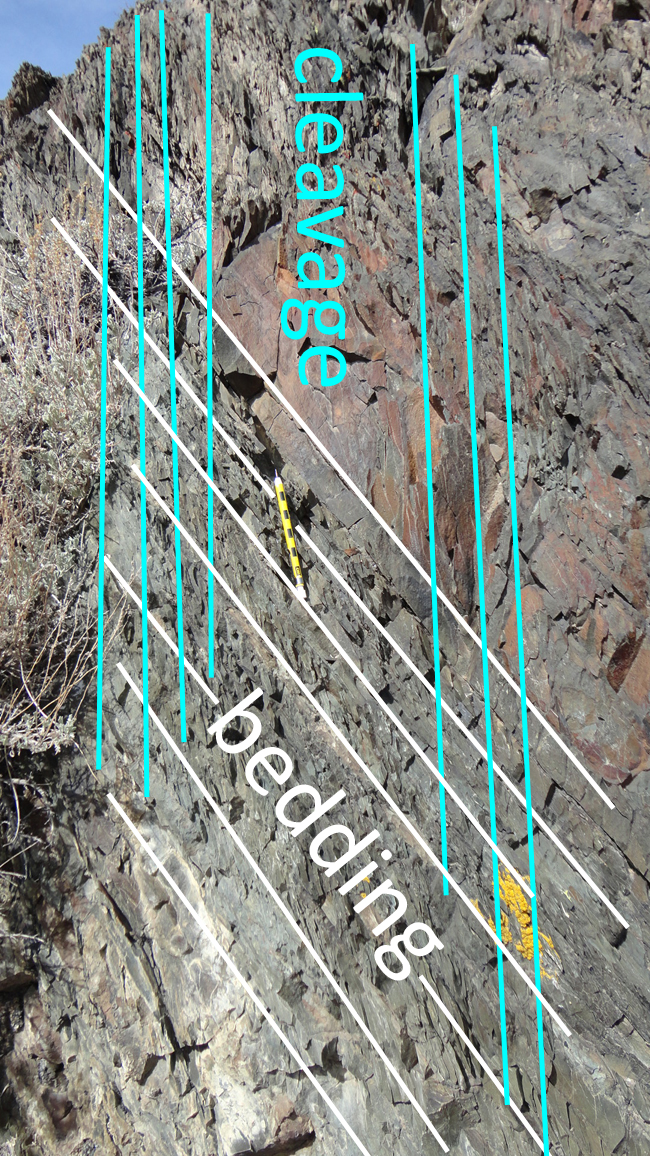
These are greenish siltstone and inter-bedded quartzites, with moderately developed cleavage. I saw this as a great opportunity to discuss bedding/cleavage relationships, and what they tell us about larger-scale fold structure and orientation. Here’s a quartet of shots from student Kirsten W. showing the ensuing lecture:
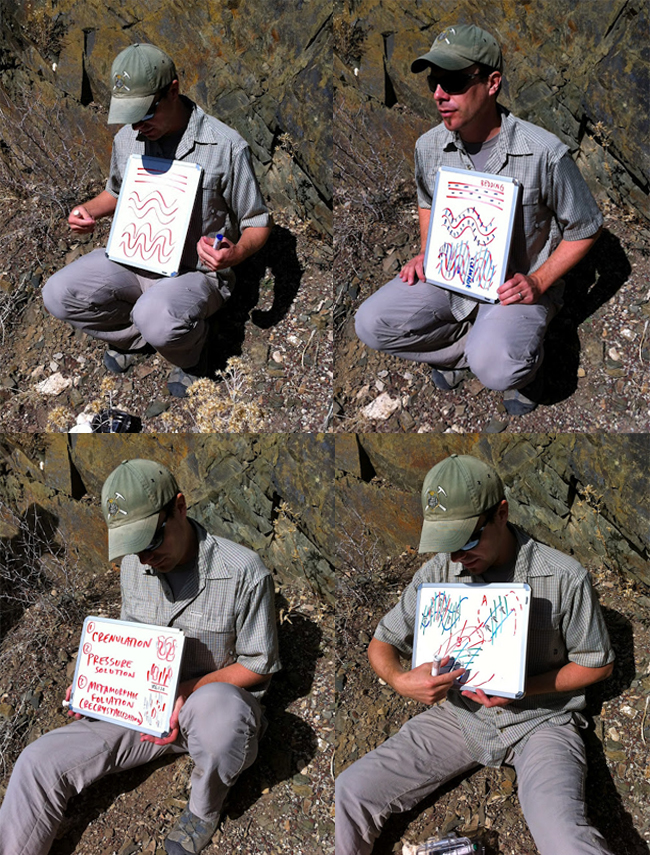
…Any questions?
Thus armed with knowledge, the students received Brunton compasses, and I sent them out to scour the landscape, taking down orientation information (strike and dip) for the bedding and the cleavage. A few minutes later, they were well at it, with more experienced students guiding novices through the requisite techniques:
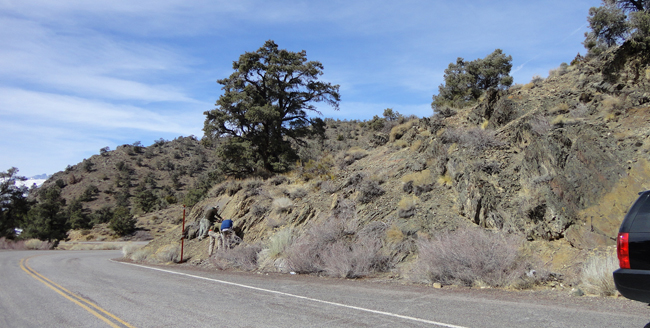
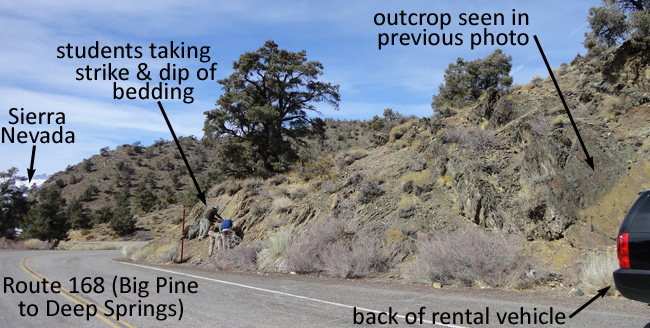
Here are Sam and Brendan and Jared, taking the strike of bedding according to right-hand rule:
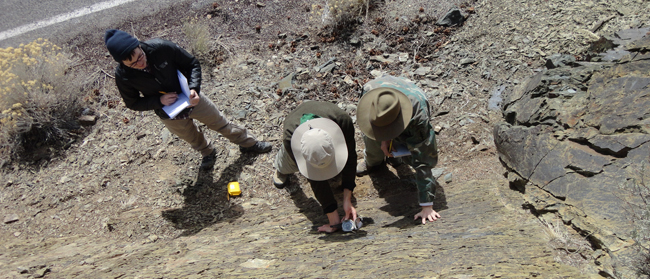
Nice teamwork!
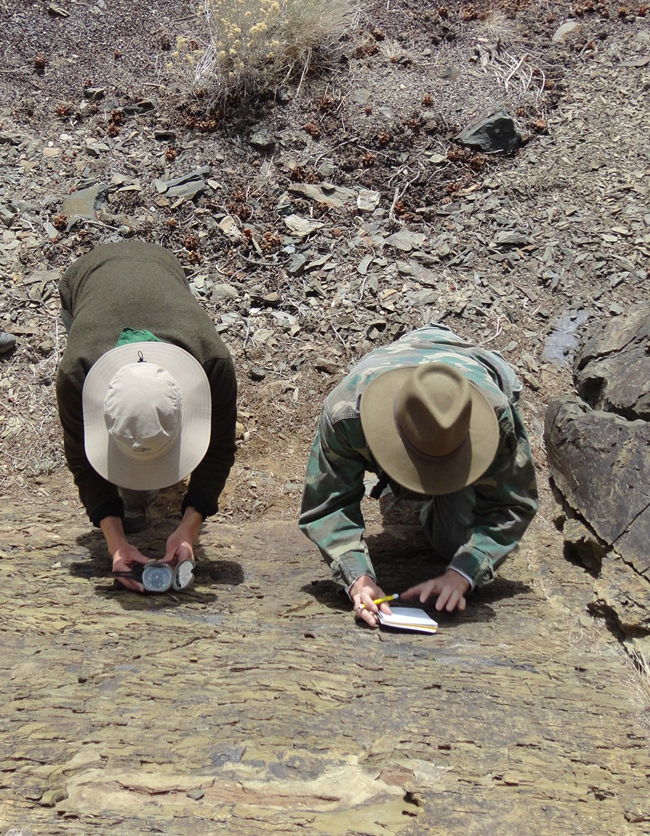
John and Kirsten and Marcelo talk technique:
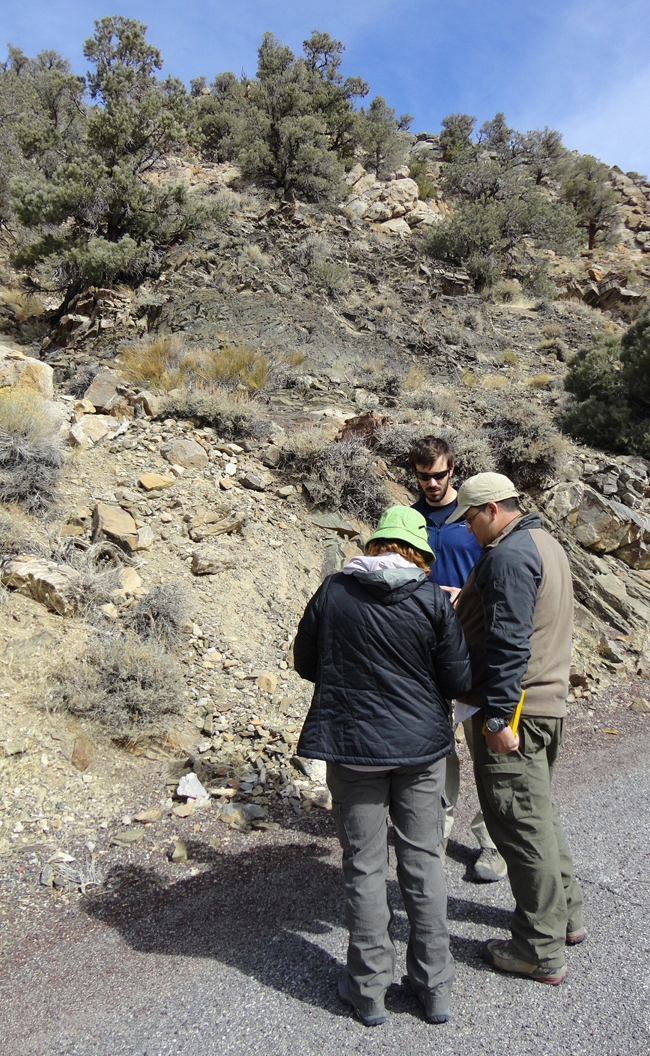
… And while they were all busy with that, I strolled around the bend in the road to the outcrop that had caught my eye in the first place:
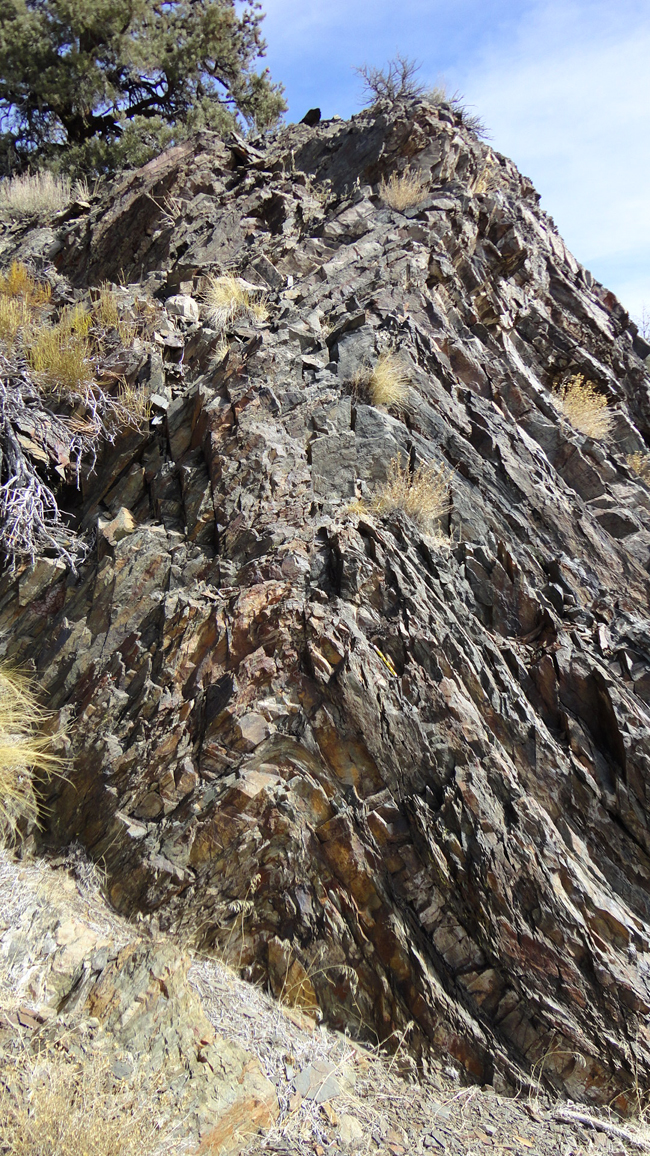
Oh, my.
That. Is. Lovely.
A superb antiform, expressed in three dimensions. Walking around to the right and looking at it perpendicular to the fold axis, you get a good look at the bedding plane. It had little lumps on it – small bedforms of some sort?
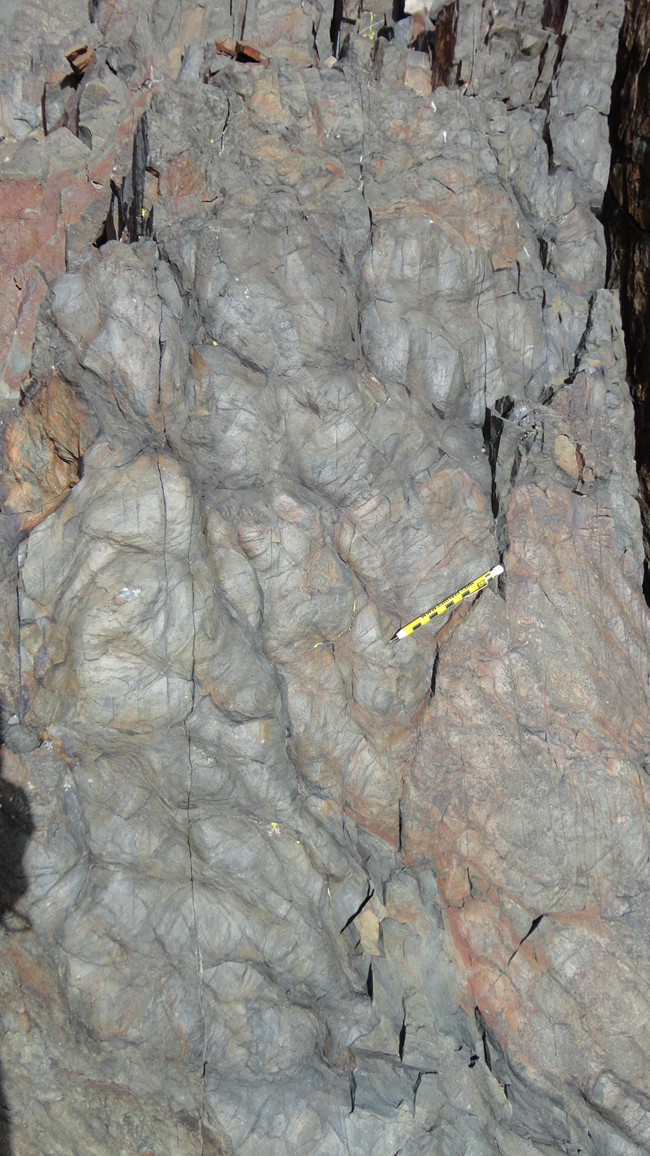
To the right, a small synformal swale, and a more subtle, open antiform:
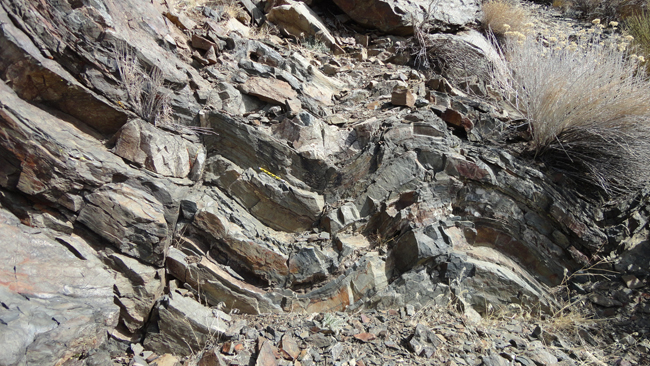
Looking down on the synform:

I climbed the hill, and found another antiformal fold up there:
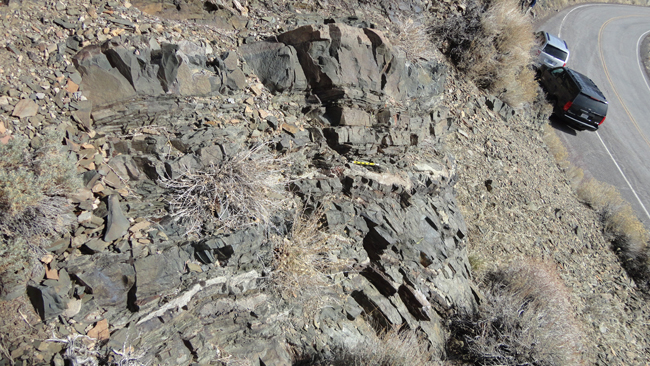
Back at street level, I documented that not all of the deformation was ductile. There were multiple series of en echelon tension gashes deforming these rocks:
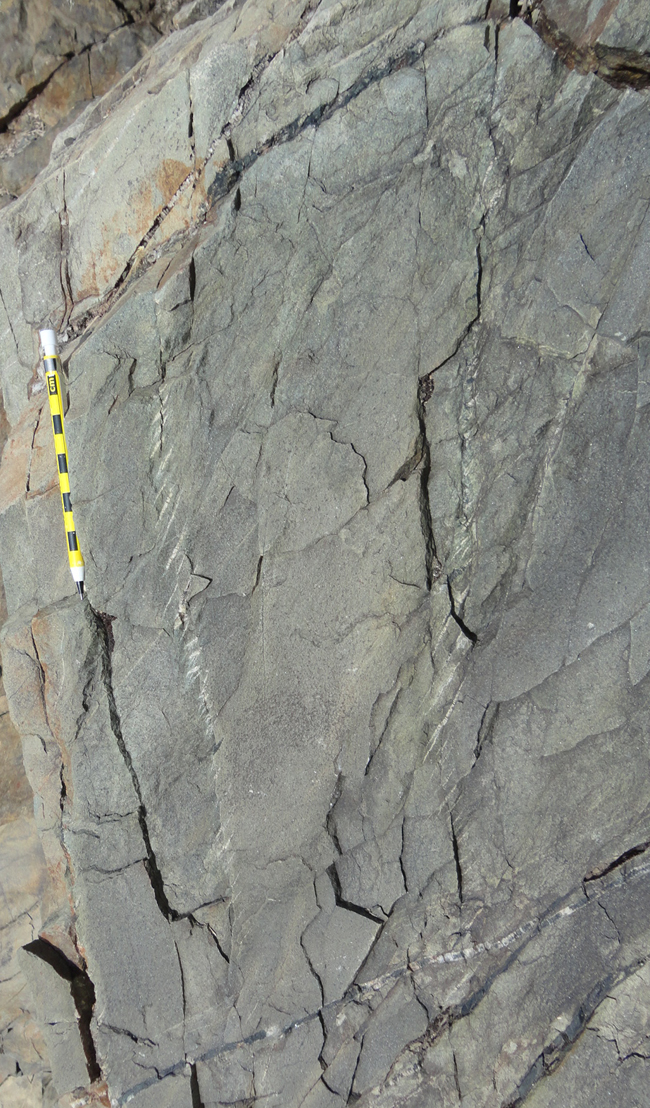
Zooming in on one of these (left side up, relative to the right):

Here’s some other en echelon tension gashes:
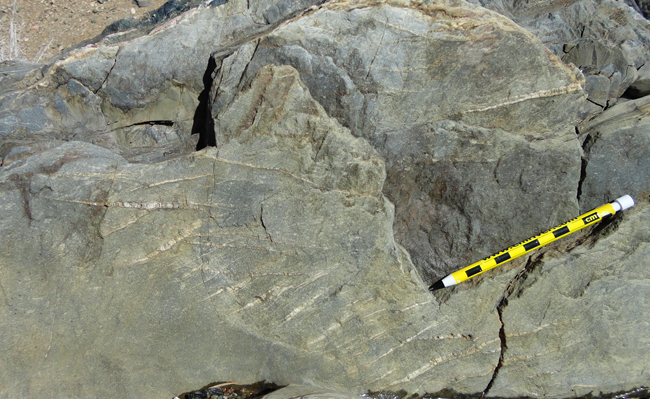
Then one of my students, Sherry, pointed up the hill. She noted that the top of the hill had rocks cropping out that looked quite different – much less layered and weathering spheroidally. Was it granite? I hiked up, and on my way up, I saw this lovely open fold near the top of the siltstone/quartzite unit (Poleta Formation???):
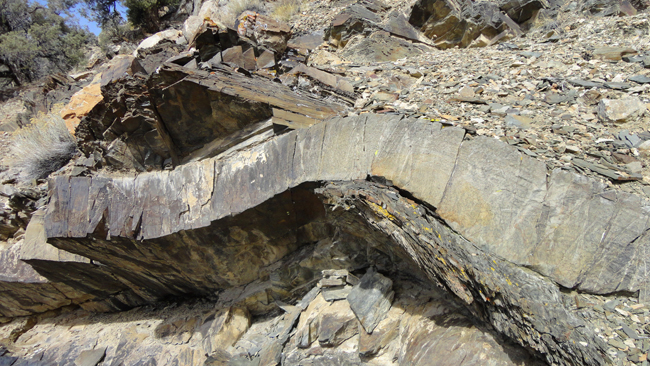
I love it when folds weather out in 3D. This was lovely, so very exquisite. Here it is from a slightly different angle:
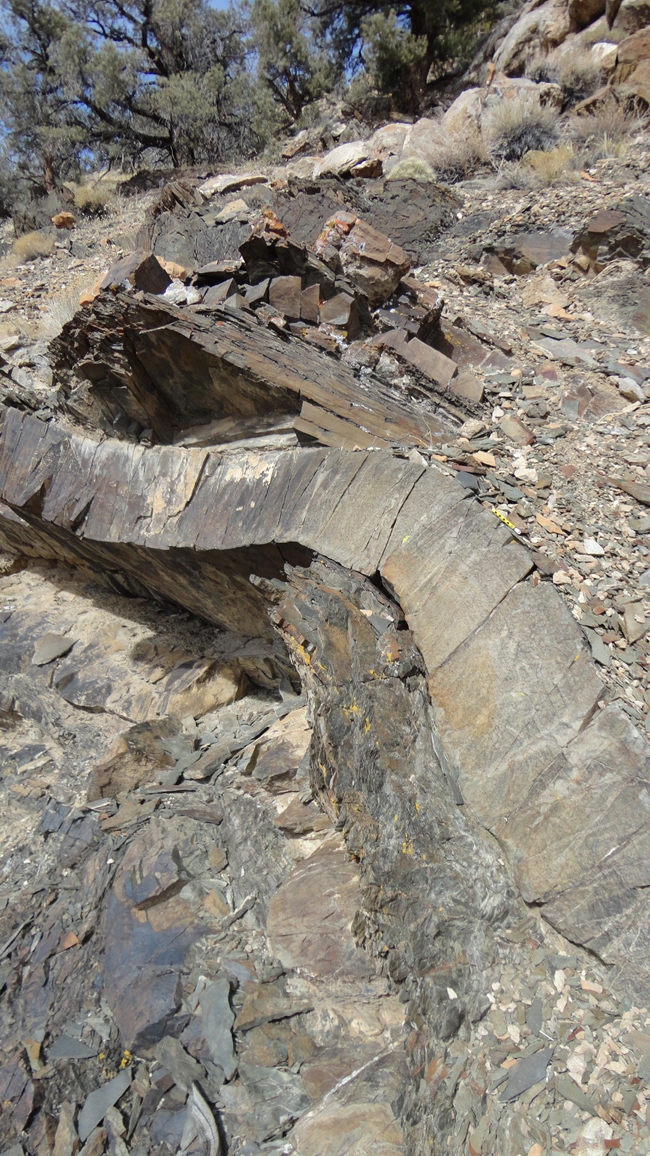
I got up to the contact, and looked at the lighter-colored, spheroidally-weathering unit.
It wasn’t a granite at all! It was a limestone! …with fossils in it!
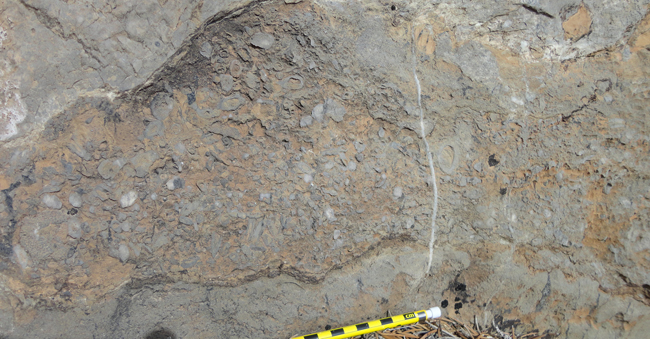
When student Filip did his pre-trip report on the Poleta Folds, he mentioned that the Poleta Formation was known for its copious archaeocyathid fossils. Archaeocyathids were Cambrian animals which are interpreted as being primitive sorts of sponges – with each having an individual shape like a double-walled ice-cream cone. Sure enough, that’s what I saw in this limestone:
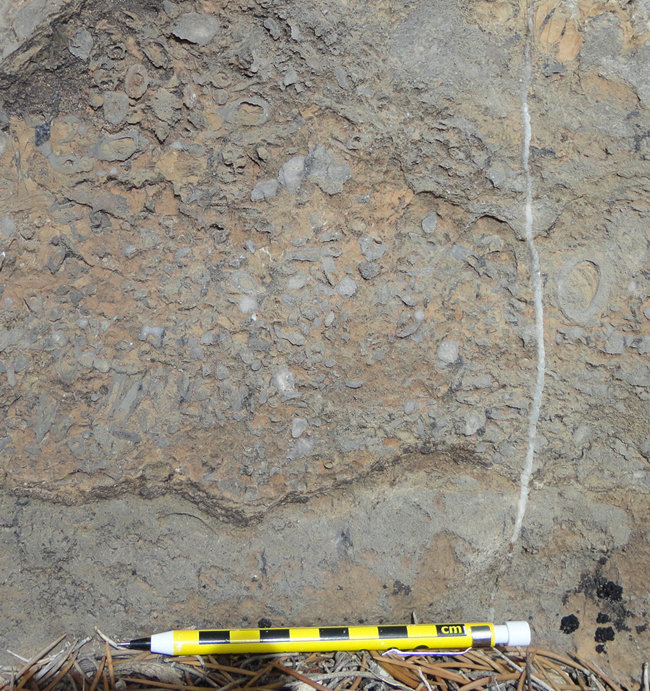
…A big fat one:
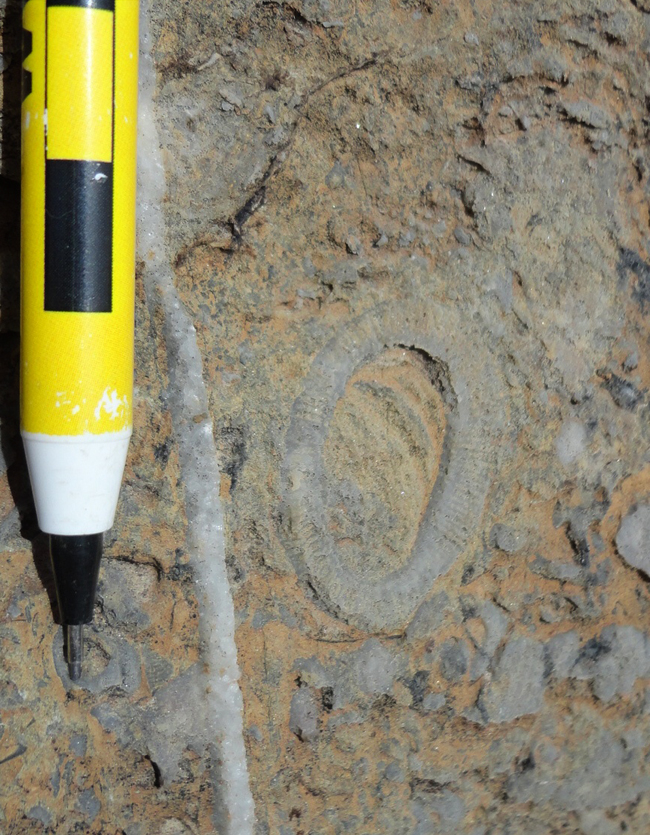
This was a discovery! I called up the climbers, and we explored around, and found more…
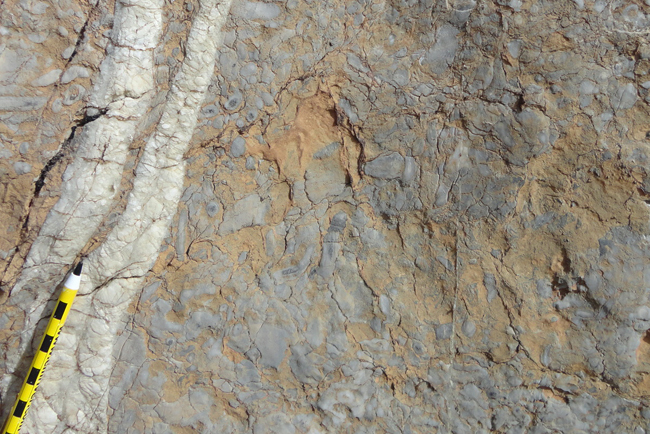
Look to the right of the two calcite veins…
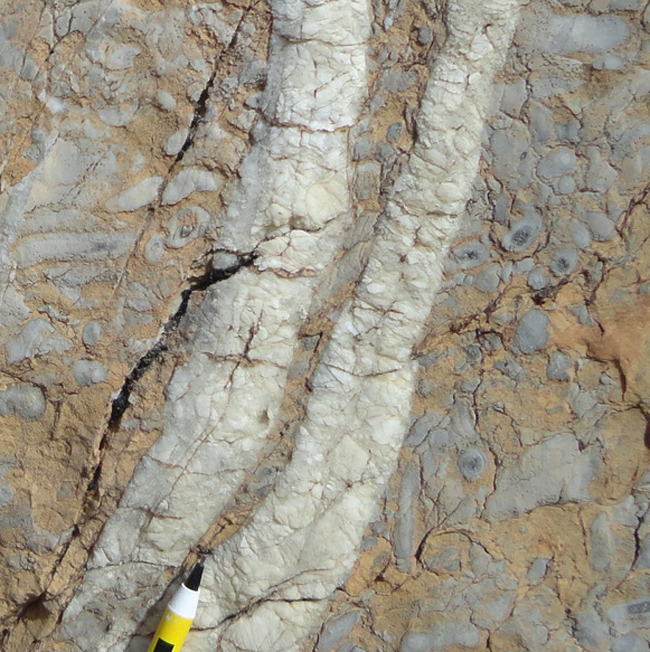
Another close-up shot:
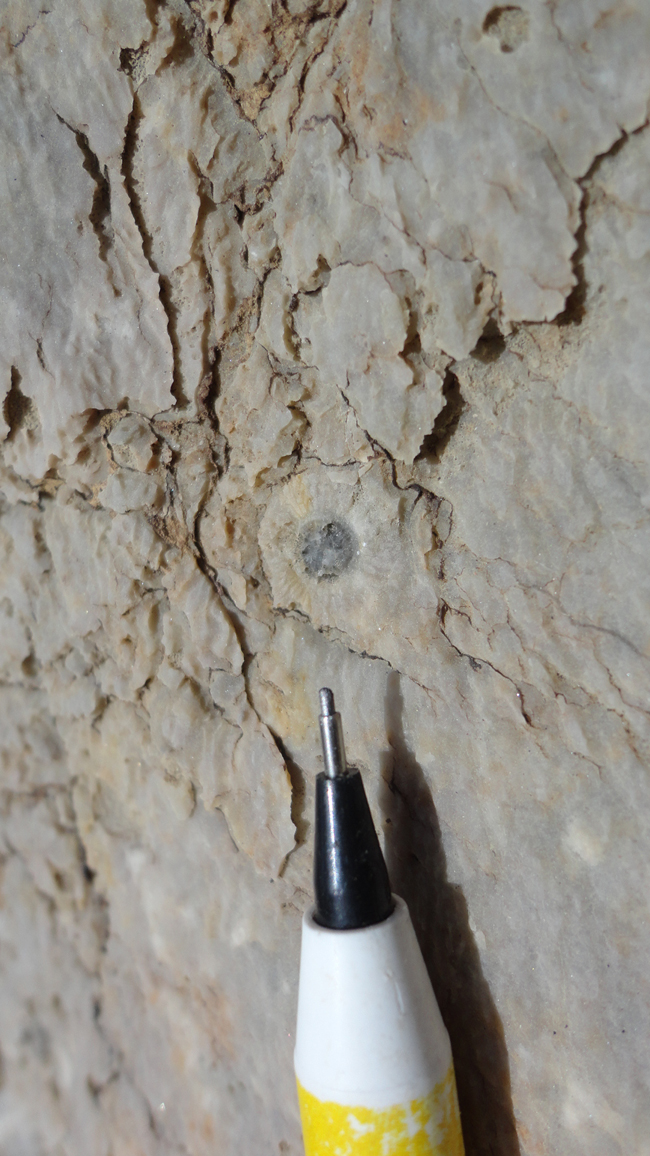
And the limestone was just as folded as the siltstone/quartzite unit beneath it! Here’s Patrick next to a tight antiform with hinge collapse:
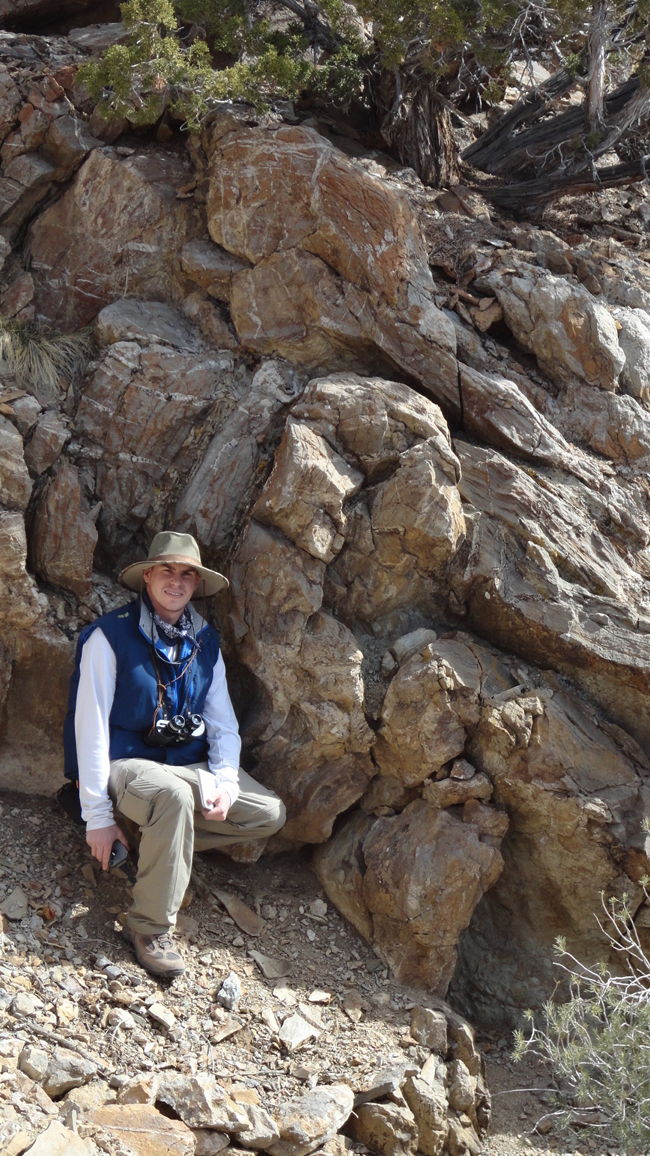
What a great place. I’m so happy I saw that first fold that prompted me to pull over. I strolled back down to the road and turned the students loose on it, and then walked across the road to another exposure. It was every bit as nice, though in shadow:
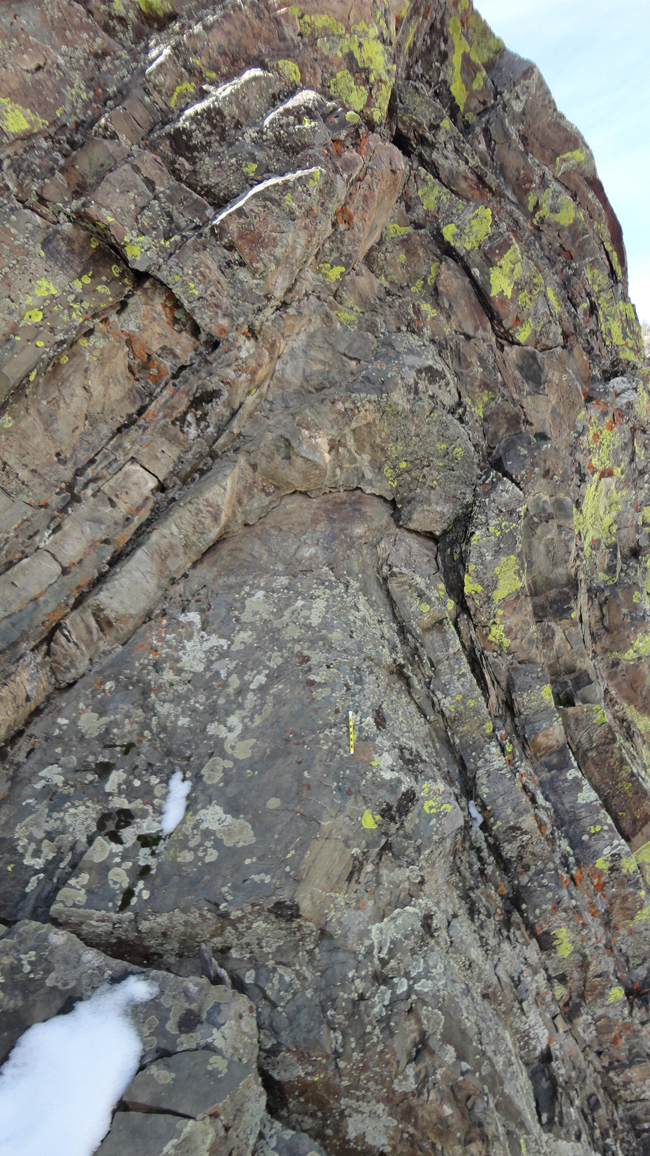
Swiveling 180°, I saw the dismembered other half of this same fold:
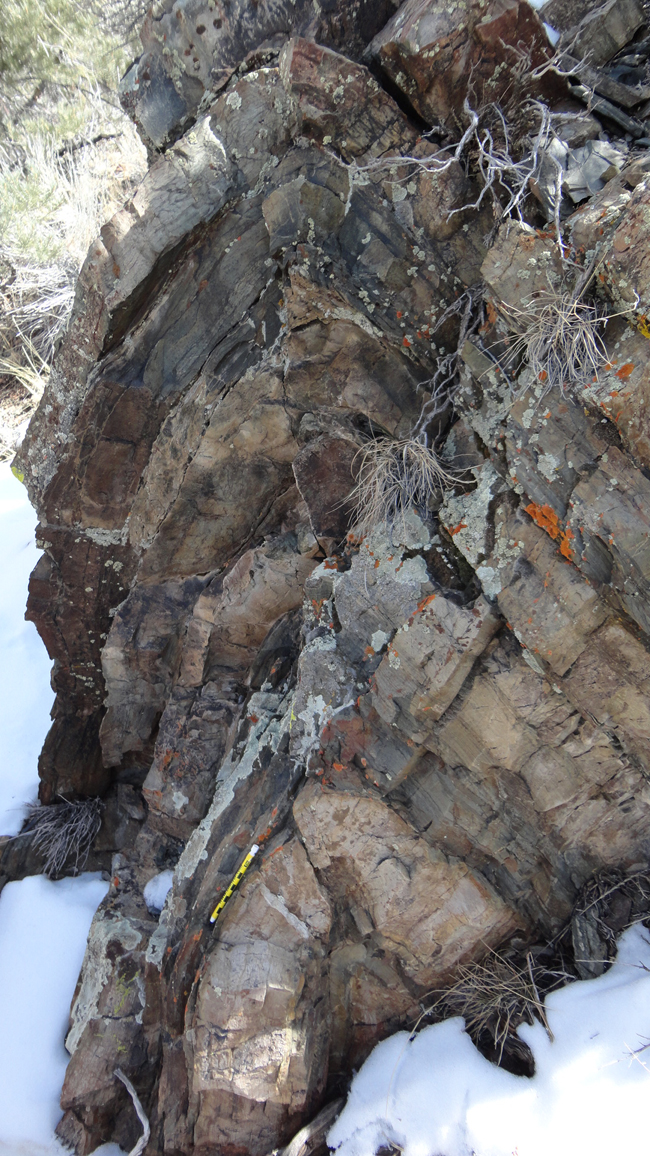
Note the small fault in the stiff quartzite layer at the heart of the fold:
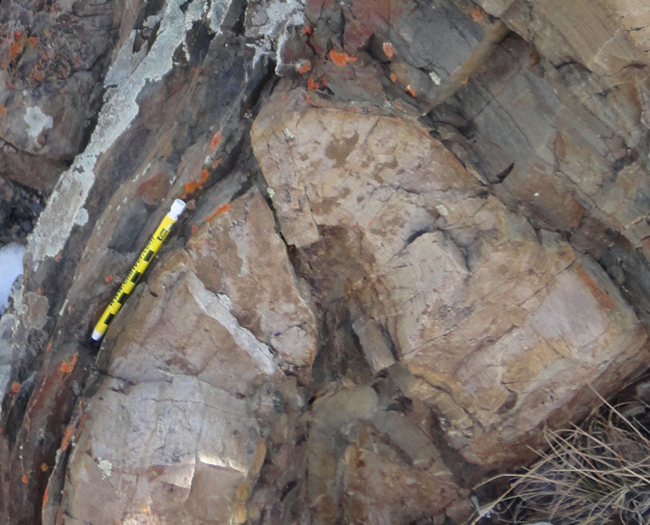
See it? No? …
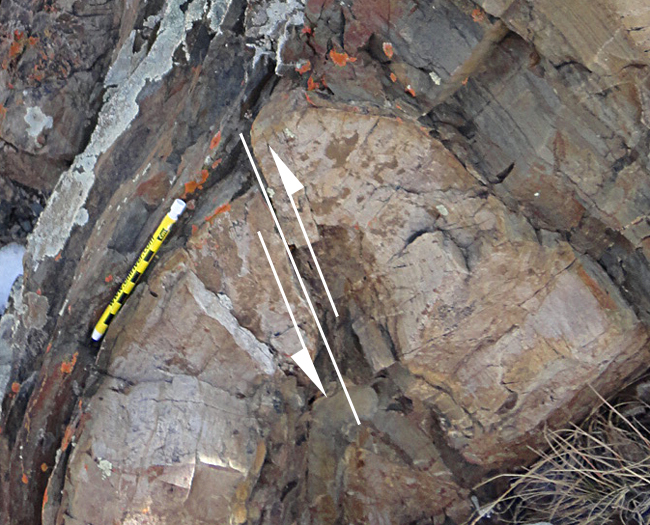
Gosh! I felt full after traversing these hills and seeing their many gorgeous structures, both primary and tectonic. What a fine location to introduce students to the wonders of field work!
There was also a decent view back west towards the Sierra Nevada:
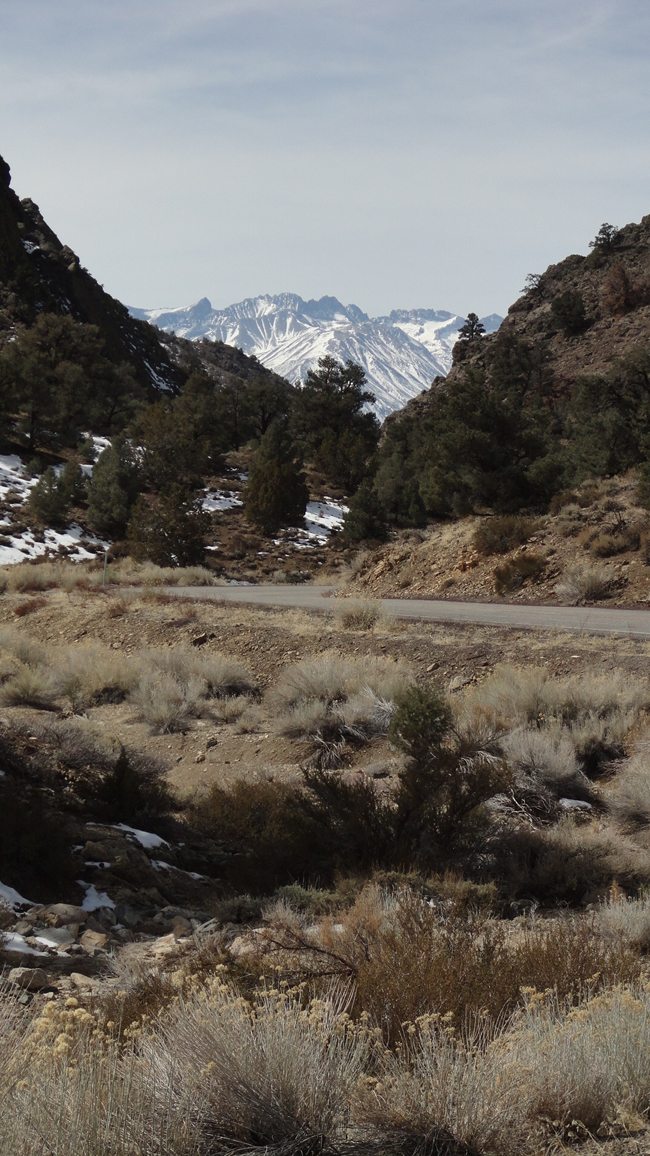
A lovely place, with lovely lessons, and lovely fossils… Happy Friday!

field trip envy! great pictures as always
Dear Callan, I enjoy your website so much. I am a semi – almost – retired physician having grown up in California and now living just north of Portland, Oregon. I have been planing various trips to scattered geological spots around the west for this summer. I certainly hope we are out of this cloistered existence by then. I found the Friday fold from March 2012 called Serendipity in the White Mountains. I would like to see some archaeocyathids in the rock off highway 168 up the hill from Lone Pine. I did locate on Google maps where you parked and am wondering how far up off the road are the fossils located. Are they easy to find and get to? Just want to see something that old….amazing. Thanks, Gary Smith
Thanks for saying so!
Yes, just head to the north side of the road and start poking around, looking for little donut-shaped structures in the rock! With 20 minutes of poking around, I’m sure you can find them. It was 8 years ago that I was there, but I recall some near the road and another outcrop higher up.